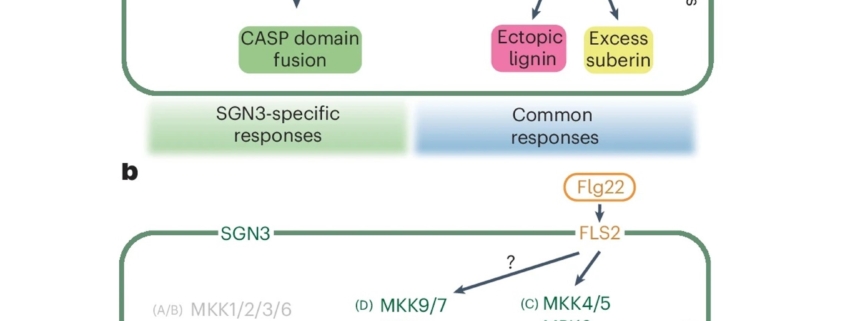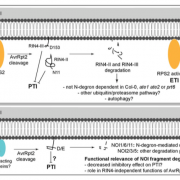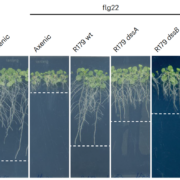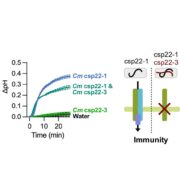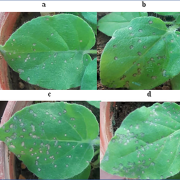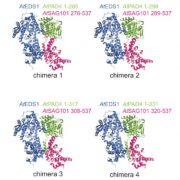Decoding the signaling precision of receptor-MAPK pathways
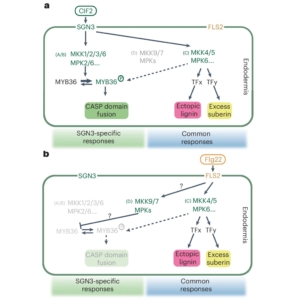 Have you ever wondered how cells distinguish between the diverse array of external signals traveling through similar pathways? To understand the intricacies of plant signaling mechanisms, Ma et al. used single endodermal cells of Arabidopsis roots as a model to compare two receptor pathways. One pathway uses the immune receptor FLAGELLIN SENSING2 (FLS2) to detect microbial signals, while the other involves the SCHENGEN3 (SGN3) receptor, a key regulator of Casparian strip (CS) development in root endodermal cells. The authors used a combination of genetic, molecular, and biochemical approaches to demonstrate that the SGN3 pathway and the FLS2 pathway activate distinct groups of mitogen-activated protein kinase kinases (MKKs). The study further showed that SGN3 stimulation enables CS domain fusion in endodermal cells through MYB36-mediated transcriptional responses, while MYB36 is not activated by the FLS2 pathway. Instead MKK4/5 is activated by FLS2 to facilitate enhanced lignin and suberin deposition. Moreover, FLS2 activates MKK7/9 which are negative regulators of CS development, thus suppressing SGN3-specific responses when this pathway is triggered. Thus, this study sheds light on the intricate complexities of plant signaling mechanisms through single cell analyses. (Summary by Abira Sahu @AbiraSahu) Nature Plants 10.1038/s41477-024-01768-y
Have you ever wondered how cells distinguish between the diverse array of external signals traveling through similar pathways? To understand the intricacies of plant signaling mechanisms, Ma et al. used single endodermal cells of Arabidopsis roots as a model to compare two receptor pathways. One pathway uses the immune receptor FLAGELLIN SENSING2 (FLS2) to detect microbial signals, while the other involves the SCHENGEN3 (SGN3) receptor, a key regulator of Casparian strip (CS) development in root endodermal cells. The authors used a combination of genetic, molecular, and biochemical approaches to demonstrate that the SGN3 pathway and the FLS2 pathway activate distinct groups of mitogen-activated protein kinase kinases (MKKs). The study further showed that SGN3 stimulation enables CS domain fusion in endodermal cells through MYB36-mediated transcriptional responses, while MYB36 is not activated by the FLS2 pathway. Instead MKK4/5 is activated by FLS2 to facilitate enhanced lignin and suberin deposition. Moreover, FLS2 activates MKK7/9 which are negative regulators of CS development, thus suppressing SGN3-specific responses when this pathway is triggered. Thus, this study sheds light on the intricate complexities of plant signaling mechanisms through single cell analyses. (Summary by Abira Sahu @AbiraSahu) Nature Plants 10.1038/s41477-024-01768-y


